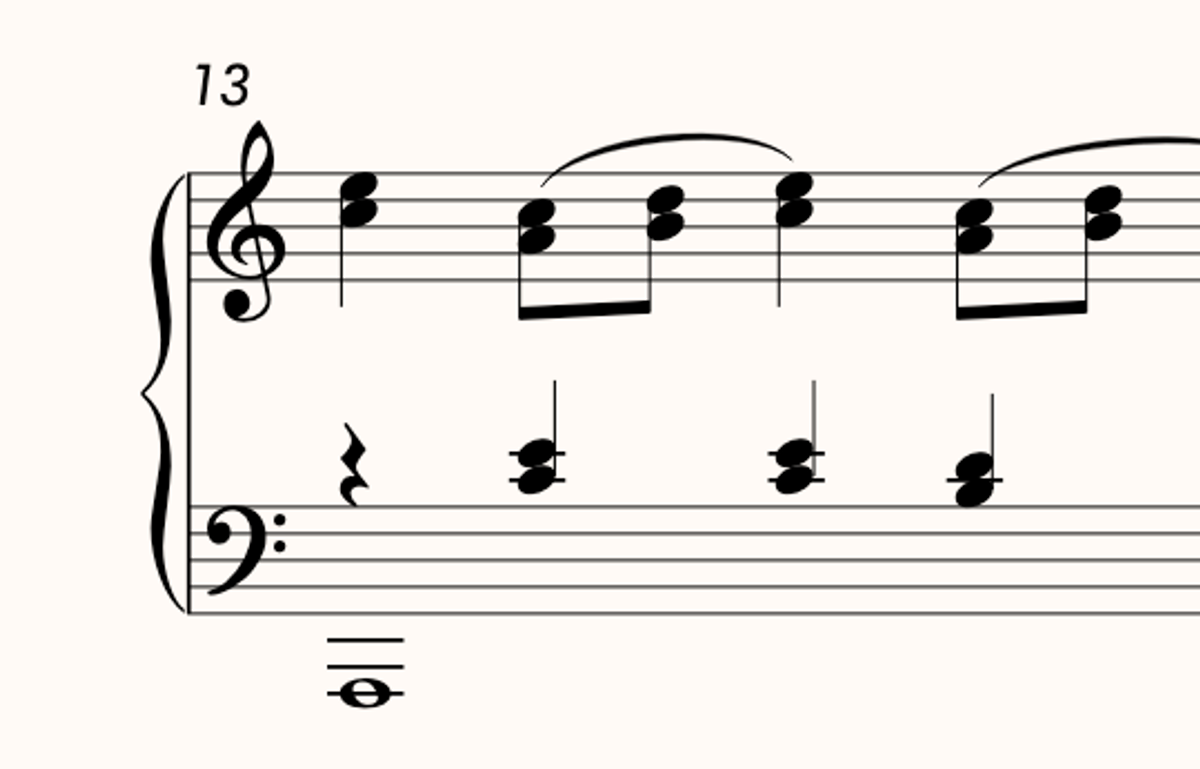🎹 Watch Ron Levy perform “Spirit House”:
🍎 Teaching Concepts in “Spirit House”
In this blog post I would like to talk about the three teaching concepts featured in “Spirit House.”
Cross-hand playing:
In my own solo piano performances, I am always looking for ways to provide contrast, and one way is to play the melody in the lower register. And nine times out of ten, I will reach over and play the melody with my right hand, at least for part of the time. I don’t do this to show off (although people do seem to find this impressive.) It just feels right. And then (sometimes) the left hand will take over. Equal time!
In George Gershwin’s “Prelude No. 2,” in the slow movement’s middle section, the composer leaves it up to the performer whether to use the right or the left hand to play the lower register melody. I’d be interested to know what preference YOU might have in that regard.
Here’s a look at the cross-hand section in “Spirit House”:

Counterpoint:
I use counterpoint in my writing to create textural interest; and for the sake of thematic unity, I like to utilize material already in the piece. For example, for the opening four bars I wrote the left-hand part first. I then added the right hand, which is the same line starting a beat later, creating a canon between the two hands. This counterpoint creates a bit of tension which is then resolved when the texture shifts to a simple melody-plus-accompaniment in measure 3.

A different sort of counterpoint occurs starting in measure 25 as a dialogue between bass and treble registers. The two seem to be having a bit of an argument, a squabble which reaches its apex in measure 27–after which the bass calmly explains his position, with the two sopranos in measure 33 seeming to agree and then moving on. Perhaps the spirits in the house debating how best to impress a visitor?

Stride bass:
I’ll let you in on the technique that I used to teach stride bass, which helps especially when the distance is great, as an example the left-hand part in measure 13. I use two concepts primarily: “Trampoline” and “GTAW” (“Get There And Wait”).

Trampoline:
The trampoline idea is to release your arm weight, dropping into the key and then literally rebounding as if bouncing on a trampoline. You want to allow your hand to bounce freely in the direction of its destination. Since “freely” implies “uncontrolled,” a bit of trial and error is required to gauge how much momentum will get you to the right spot. But once found, it basically locks in and then you don’t have to think about it.
Students will want to hold their hand in midair, but this really doesn’t work–a certain amount of trust is required! But once they get it, it feels so liberating to move this way that it very soon becomes the default.
“GTAW” (“Get There and Wait”):
The idea behind GTAW goes along with the bounce idea above. You want to bounce with enough energy to get to your next spot early, so you can then play the note at your leisure when the time is exactly right. Better to get there early rather than too late, right?
This technique is used for covering large distances on the keyboard, no matter how fast the tempo: yes, even in a very fast tempo, one always gets there just a little bit ahead of time. You can study videos of the great piano virtuosos to confirm this, but you will probably have to slow down the video footage to see it because the hand really is quicker than the eye!












Be the first to comment.